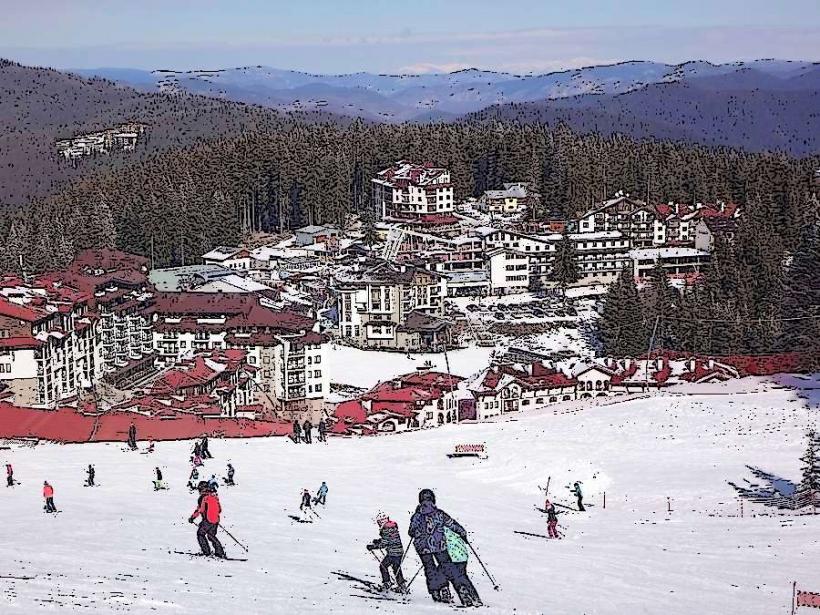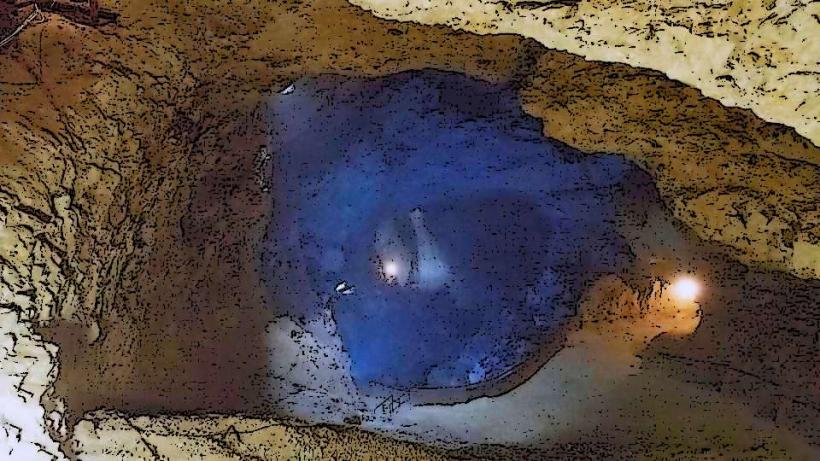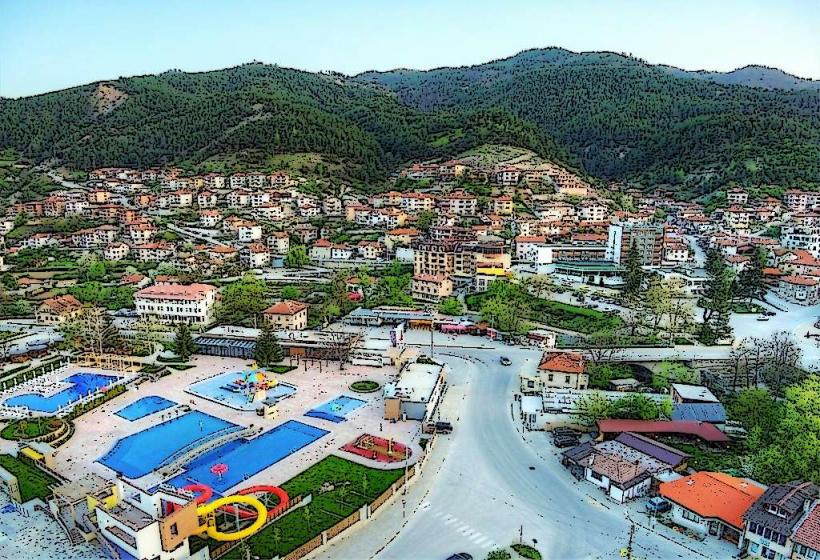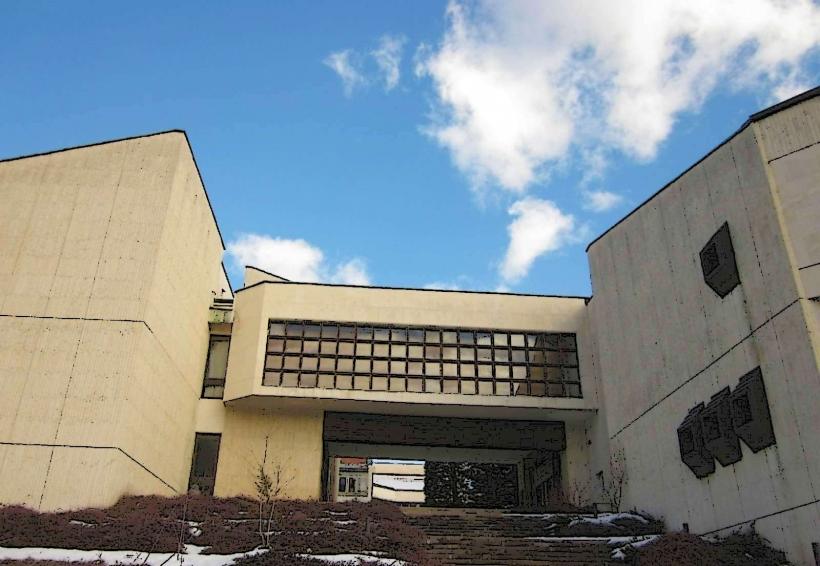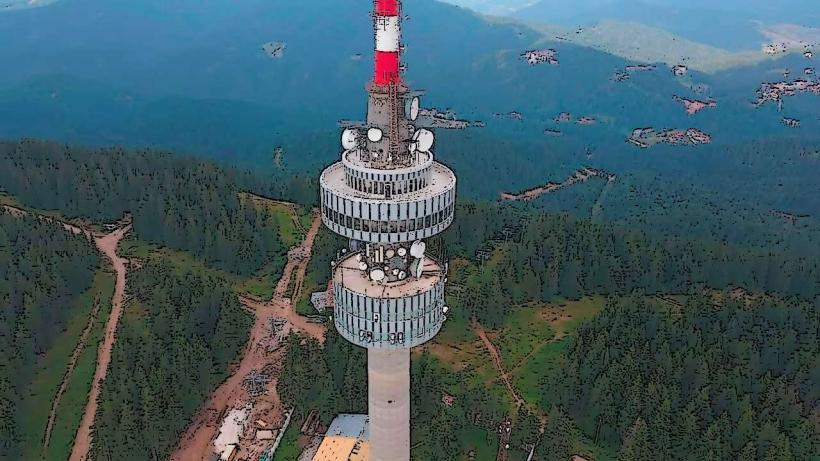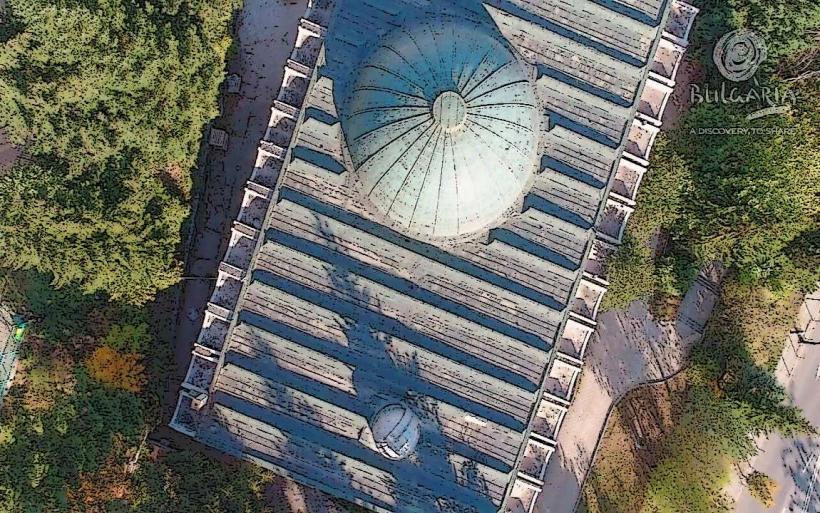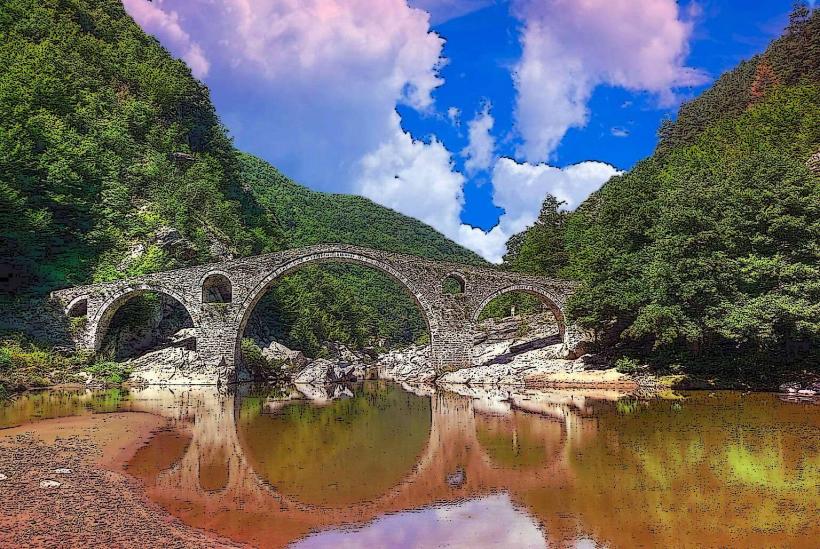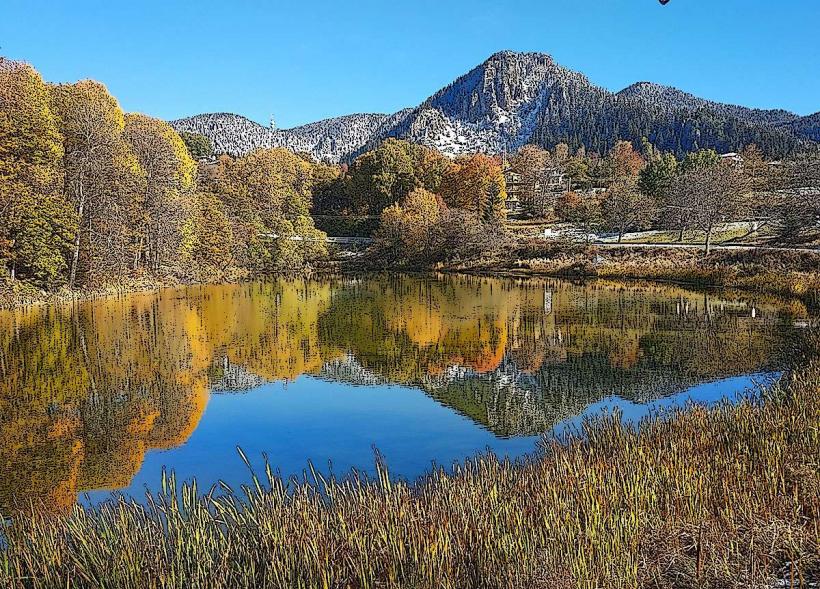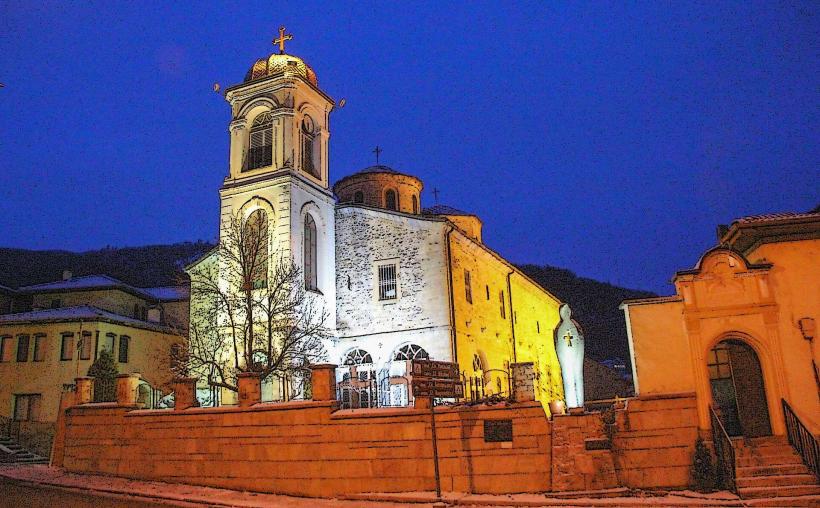Information
Landmark: Rhodopean Ethnographic ComplexCity: Smolyan
Country: Bulgaria
Continent: Europe
The Rhodopean Ethnographic Complex is a cultural and historical museum located in the Smolyan region of southern Bulgaria, specifically in the village of Kozhuh near Smolyan. It offers visitors an immersive experience into the traditional life, customs, and culture of the Rhodope Mountains. The complex showcases the unique heritage of the Rhodopean people, whose way of life is deeply rooted in the mountain landscapes and their centuries-old traditions.
Overview:
- Location: The Rhodopean Ethnographic Complex is situated in the Kozhuh village, about 8 km from the town of Smolyan, which is in the heart of the Rhodope Mountains. The complex is set in a picturesque natural environment, reflecting the traditional architecture and way of life of the local population.
- Purpose: The complex was established with the goal of preserving and showcasing the ethnographic heritage of the Rhodope region, including its architecture, crafts, traditions, and the day-to-day life of its inhabitants. It serves both as a museum and a cultural center, offering educational and tourist experiences.
Key Features:
Traditional Rhodopean Architecture:
- The complex includes several buildings designed to resemble traditional Rhodopean homes and rural structures, providing a realistic representation of the region's historical and cultural heritage.
- The buildings are made from stone and wood, typical of the Rhodopean architectural style. Many of them feature characteristic elements such as stone foundations, wooden beams, and thatched roofs. The architecture reflects the local adaptations to the mountainous environment.
Exhibits on Traditional Crafts:
- The museum exhibits various traditional crafts that were once central to the Rhodopean economy. These include weaving, pottery, woodworking, basket-making, and metalworking. Many of the items displayed are handmade using ancient techniques that have been passed down through generations.
- The complex also demonstrates the arts of embroidery and textile production, which have long been an important part of Rhodopean folklore.
Folk Art and Costumes:
- One of the highlights of the complex is its collection of folk costumes and textile artifacts. The Rhodope region is known for its colorful and distinctive traditional clothing, which varies from village to village and is often worn during local festivals and celebrations.
- The exhibits include a wide range of traditional garments that represent different social classes, such as the women’s embroidered aprons, men’s vests, and decorative headpieces.
- Visitors can also learn about folk music, dances, and rituals that have been an integral part of Rhodopean culture.
Ethnographic Collections:
- The complex houses an impressive collection of ethnographic artifacts, including household items, tools, farming implements, and religious objects that were once part of everyday life in the Rhodope region.
- Visitors can see traditional kitchenware, farming tools, and village instruments used in the past, helping to paint a picture of life in the mountains before the advent of modern technology.
- The exhibits also explore the local religious customs, including the role of Eastern Orthodox Christianity in the everyday lives of Rhodopeans.
Outdoor Exhibitions:
- In addition to the indoor exhibits, the Rhodopean Ethnographic Complex features an open-air museum with traditional houses, barns, and workshops arranged to give visitors a sense of the local village life. Some of these structures are authentic buildings that have been moved to the complex from nearby villages.
- There is also a traditional Rhodopean garden, showcasing the types of plants and herbs commonly grown in the area, including herbal remedies, vegetables, and fruit trees.
Interactive Activities:
- The complex offers various interactive activities aimed at engaging visitors and providing a hands-on experience of Rhodopean culture. Visitors can try their hand at traditional crafts, such as weaving on a loom, pottery making, or creating simple wooden items.
- Seasonal workshops and events, such as folk dance performances or traditional cooking demonstrations, are often held to allow visitors to immerse themselves more fully in the local culture.
Cultural Events and Festivals:
- The Rhodopean Ethnographic Complex also serves as a venue for cultural events, such as folk music performances, traditional dances, and local festivals. These events celebrate the customs and heritage of the region, providing a lively and immersive experience for both locals and visitors.
- The complex is especially popular during summer months, when festivals and celebrations honoring Rhodopean folklore take place. Visitors can enjoy live performances, food tastings, and crafts exhibitions during these events.
Educational Role:
- The complex plays an important role in preserving the cultural and historical heritage of the Rhodope region while educating the public about its significance. Schools, local communities, and tourists from all over the world visit the complex to learn about the history and traditions of the area.
- It also serves as a research center for those interested in ethnography, folklore, and cultural anthropology, offering valuable insights into the lives of people who have lived in the mountains for centuries.
Visitor Experience:
- Cultural Immersion: Visitors can step back in time and experience the traditional lifestyle of the Rhodopean people, learning about the region’s rich cultural heritage, daily life, and customs.
- Hands-on Learning: Interactive displays and workshops provide visitors with the opportunity to try traditional crafts and learn practical skills that were once essential for life in the Rhodope Mountains.
- Peaceful Environment: The complex is set in a beautiful natural environment, offering visitors the chance to enjoy the tranquility of the Rhodopean countryside, surrounded by forests, meadows, and the distant peaks of the mountains.
Accessibility:
- The Rhodopean Ethnographic Complex is easily accessible from Smolyan and other nearby towns in the region. It is a short drive or hike from Smolyan, and the area is well-marked for tourists. It is an ideal destination for those exploring the Smolyan region or looking to experience the authentic culture of the Rhodope Mountains.
Conclusion:
The Rhodopean Ethnographic Complex is a fascinating cultural destination that offers visitors a deep dive into the traditions, crafts, and way of life of the people of the Rhodope Mountains. Its collection of historical artifacts, traditional houses, and interactive exhibits makes it an essential stop for anyone interested in learning about the region's rich cultural heritage. Whether you are a history enthusiast, a lover of folklore, or someone seeking to explore the natural beauty of the Rhodope Mountains, this complex provides a memorable and enriching experience.

